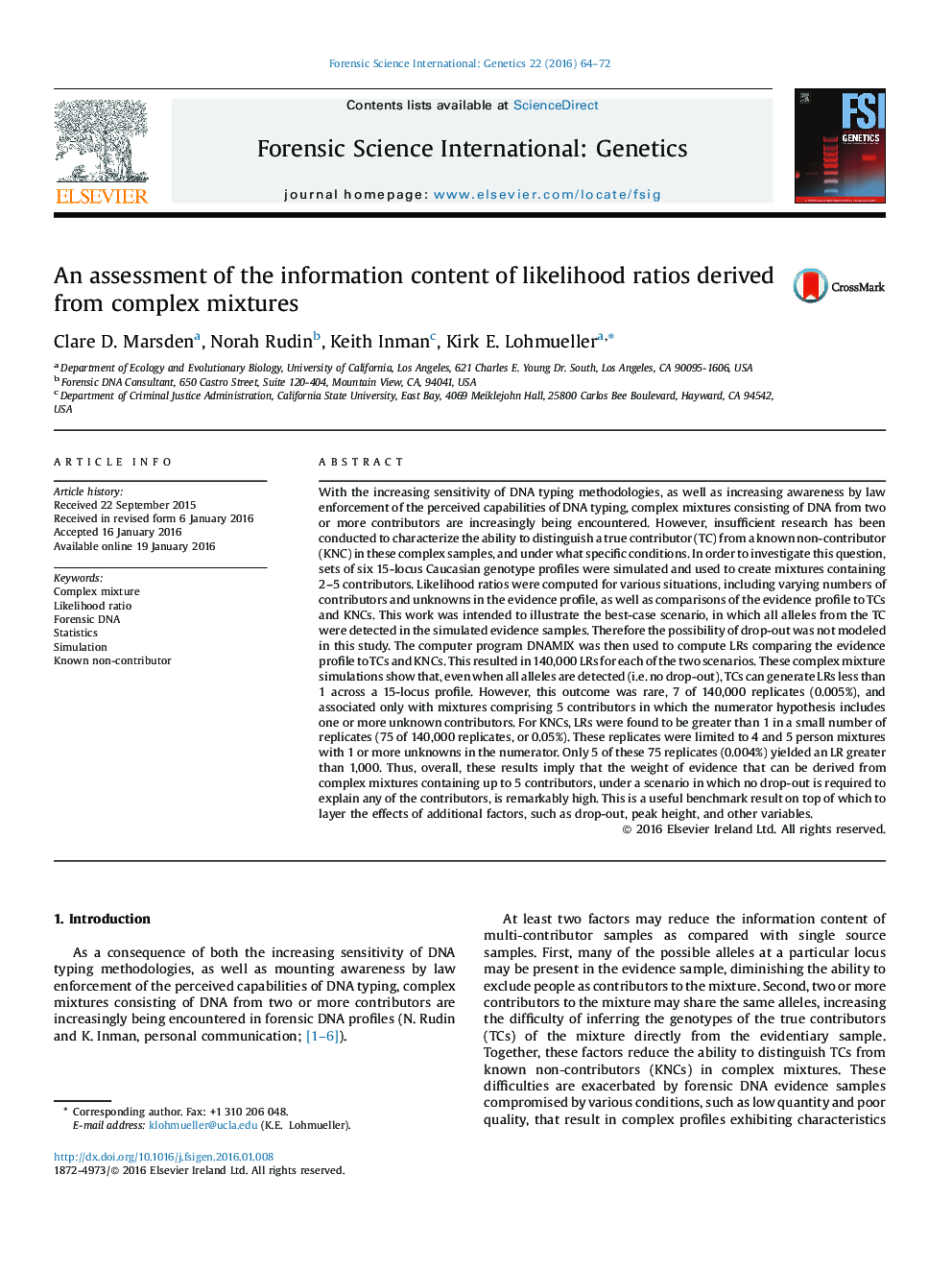| کد مقاله | کد نشریه | سال انتشار | مقاله انگلیسی | نسخه تمام متن |
|---|---|---|---|---|
| 98706 | 160877 | 2016 | 9 صفحه PDF | دانلود رایگان |
• Simulated mixtures with 2–5 contributors lacking drop-out and peak height information.
• Tested whether true contributors could be distinguished from non-contributors.
• Good separation was found, even with 5 contributor mixtures.
• The weight of evidence for mixtures with no drop-out is remarkably high.
• This work provides an upper limit for LRs for profiles with up to 5 contributors.
With the increasing sensitivity of DNA typing methodologies, as well as increasing awareness by law enforcement of the perceived capabilities of DNA typing, complex mixtures consisting of DNA from two or more contributors are increasingly being encountered. However, insufficient research has been conducted to characterize the ability to distinguish a true contributor (TC) from a known non-contributor (KNC) in these complex samples, and under what specific conditions. In order to investigate this question, sets of six 15-locus Caucasian genotype profiles were simulated and used to create mixtures containing 2–5 contributors. Likelihood ratios were computed for various situations, including varying numbers of contributors and unknowns in the evidence profile, as well as comparisons of the evidence profile to TCs and KNCs. This work was intended to illustrate the best-case scenario, in which all alleles from the TC were detected in the simulated evidence samples. Therefore the possibility of drop-out was not modeled in this study. The computer program DNAMIX was then used to compute LRs comparing the evidence profile to TCs and KNCs. This resulted in 140,000 LRs for each of the two scenarios. These complex mixture simulations show that, even when all alleles are detected (i.e. no drop-out), TCs can generate LRs less than 1 across a 15-locus profile. However, this outcome was rare, 7 of 140,000 replicates (0.005%), and associated only with mixtures comprising 5 contributors in which the numerator hypothesis includes one or more unknown contributors. For KNCs, LRs were found to be greater than 1 in a small number of replicates (75 of 140,000 replicates, or 0.05%). These replicates were limited to 4 and 5 person mixtures with 1 or more unknowns in the numerator. Only 5 of these 75 replicates (0.004%) yielded an LR greater than 1,000. Thus, overall, these results imply that the weight of evidence that can be derived from complex mixtures containing up to 5 contributors, under a scenario in which no drop-out is required to explain any of the contributors, is remarkably high. This is a useful benchmark result on top of which to layer the effects of additional factors, such as drop-out, peak height, and other variables.
Journal: Forensic Science International: Genetics - Volume 22, May 2016, Pages 64–72
